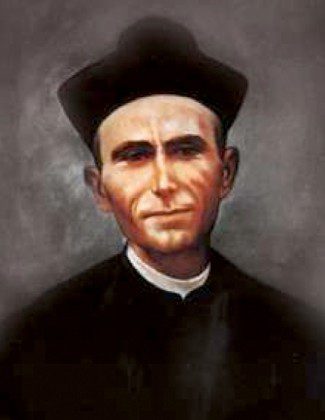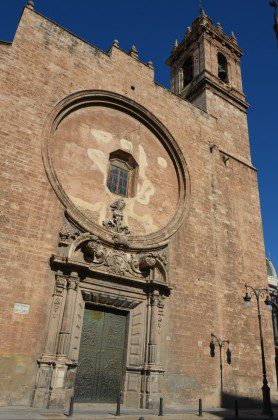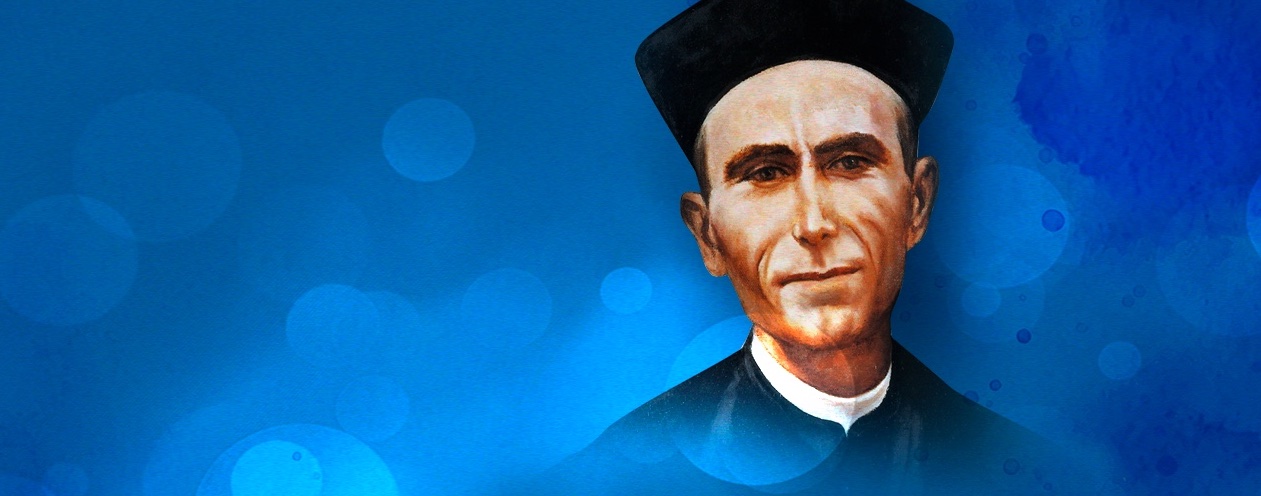September 22: Feast of Fr. Juan Maria de la Cruz, SCJ martyr
“God’s Blessings! Let all things be done according to the divine will. I am very happy to be able to suffer with Him, because He suffered so much for me, a poor sinner.”
-Written in a letter by Fr. Juan María de la Cruz, just days before his death

On September 22 we remember and celebrate the life of Fr. Juan María de la Cruz, SCJ. On March 11, 2001, Pope John Paul II declared him blessed along with other 233 martyrs of the Spanish Civil War.
Mariano García Méndez was born on September 25, 1891, in San Esteban de los Patos in the Province of Avila. He was the firstborn of 15 children.
His family looked after the local church. Because there was no priest in the small community, his father, after a day of working in the fields, led novenas and rosary prayers. It came as no surprise when the father’s eldest, the boy called Marianito, felt called to the priesthood at the age of 10.
He eventually pursued that call and was ordained a priest for the diocese of Avila. Fr. Juan Maria served in parish ministry and later as a school chaplain.
Before diocesan ordination, Fr. Juan Maria discerned a vocation with the Dominican Fathers of Saint Thomas of Avila but health concerns prevented him from completing his novitiate. After ordination, he continued to feel called to religious life and sought entrance into the Christian Brothers in Nanclares de Oca, but again, his health failed him.
Continuing to serve as a diocesan priest, Fr. Juan Maria often found himself in Madrid, where he went to the church of the Religiosas Reparadoras (Sisters of Reparation). During one such visit, he met Fr. William Zicke, one of the founding members of the Spanish Province. They struck up a friendship and Fr. Juan Maria told him of his desire for religious life. In turn, Fr. Zicke told him about the Priests of the Sacred Heart and its founder, Fr. Leo John Dehon.
In the Dehonians Fr. Juan Maria found what he had been searching for and on October 31, 1926, he made his first profession. He took the religious name by which he is now known: “Juan María de la Cruz.” The name honored his two great loves: Holy Mary and St. John of the Cross, who like himself was from Avila.
Initially, Fr. Juan María was a teacher in the minor seminary at Novelda. However, by 1929 he moved into fundraising to help support the Spanish Province. At that time, fundraising was barely a step up from begging. Fr. Juan María went from village to village seeking both funds and vocations for the congregation.
The Spanish Civil War
In the midst of the turbulent years of civil strife in Spain from 1931-36, the Catholic Church in Spain suffered one of the most difficult persecutions in its history. Churches, seminaries, rectories, monasteries and convents, were sacked and destroyed. Thirteen bishops, 4,184 priests, 2,365 religious brothers, 283 nuns and thousands of lay Catholics were killed.
On July 23, 1936, Fr. Juan traveled to Valencia seeking refuge with one of the congregation’s benefactors. To hide his identity as a priest he dressed in a large, secondhand jacket. The oversized garment eventually earned him the nickname “Fr. Chaquet” (Fr. Big-Jacket).

Walking from the train station he passed the church of “los Santos Juanes” in the center of the city. There he witnessed men desecrating and burning the church. Fr. Juan shouted in protest. When the men heard his shouting, they said to each other: “He is a reactionary.”
“No, I am a priest!” said Fr. Juan.
That was all that was needed to arrest him and take him to the Modelo jail in Valencia.
In jail, witnesses recalled that Fr. Juan María remained faithful to his religious call.
A fellow prisoner remembers Fr. Juan standing in the prison courtyard, leading the rosary in a loud voice “and since we were always being watched by armed guards who insulted us and threatened us, someone asked him not to pray so as not to provoke them. But he said that nothing could have been better than to die praying, and so we continued with our prayers…”
“I remember having seen him every day in the prison yard praying with his breviary for at least an hour or an hour-and-a-half. He was seen praying so often that somebody said: ‘One day Fr. Chaquet will be shot down like a baby bird.’”
And another witness of those days said:
“He carried out his ministry with those who asked for it. He encouraged the people but did so in combination with a moderation which was an inherent characteristic of his priestly character. It can absolutely be said that he never made one gesture which could be considered as being insolent, it was rather quite the contrary.”
Fr. Juan’s cellmate said that “He always behaved like a completely worthy priest. If he found himself in the yard and heard the hours rung he recited prayers with whomever happened to be there. There were some who saw him doing that on several occasions. There were also times when I myself saw him praying in the cell. I never saw him behave discourteously with anyone.”
On the night of August 23, 1936, Fr. Juan, together with nine other prisoners, was taken south of Valencia to be shot. The next day the bodies of the victims were thrown into a common grave in the cemetery of Silla.
Fr. Juan María de la Cruz was the first Dehonian to be named blessed by the Church.

